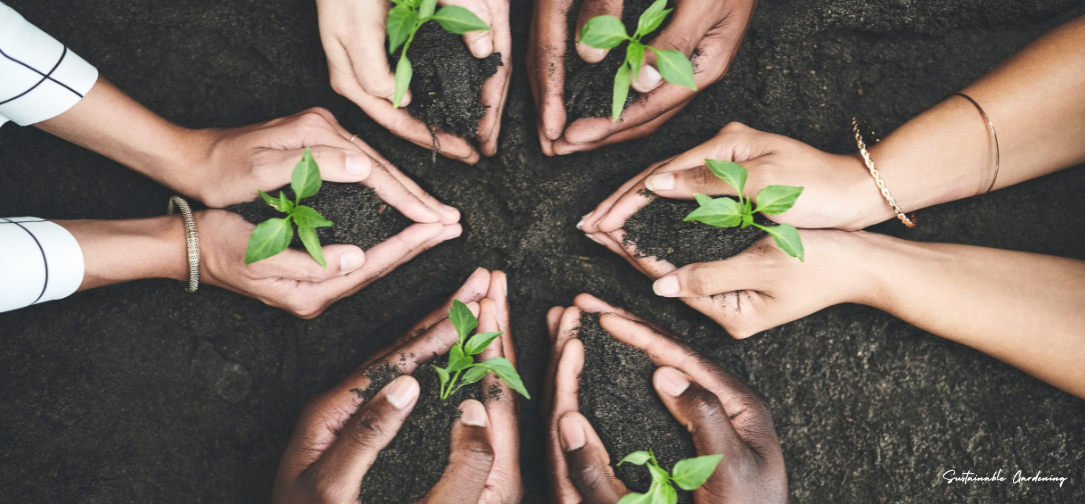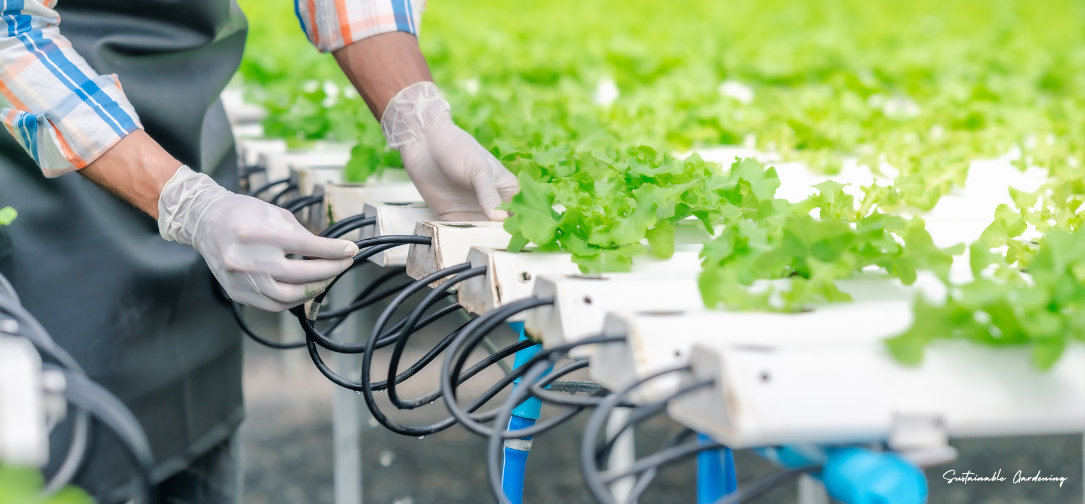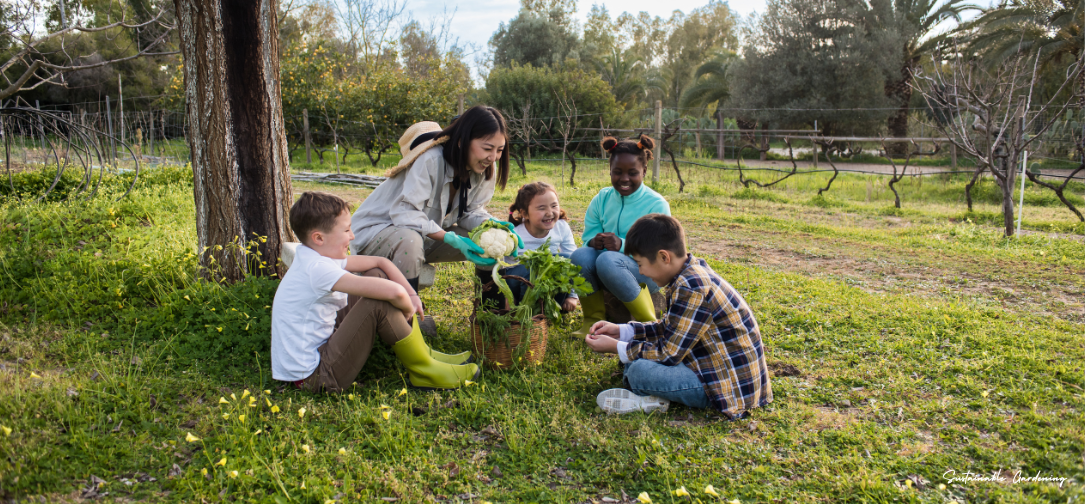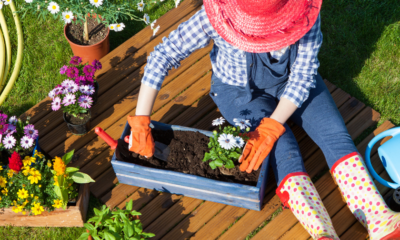Home and Garden
Sustainable Gardening in 2024: Emerging Trends and Eco-Friendly Practices

In recent years, sustainable gardening has surged in popularity as more people recognize the importance of environmentally friendly practices in their daily lives. Gardening, once a hobby or a means to beautify a space, has evolved into a crucial aspect of the global sustainability movement. In 2024, this trend has only intensified, with new practices and tips emerging to help gardeners reduce their environmental impact. This report delves into the latest trends in sustainable gardening, emphasizing eco-friendly practices, native plant gardening, and innovative techniques that are shaping the future of gardening worldwide.
The Rise of Sustainable Gardening
The concept of sustainable gardening revolves around creating gardens that benefit the environment rather than harm it. This includes using resources efficiently, minimizing waste, and fostering biodiversity. The surge in interest can be attributed to a growing awareness of climate change, the need for conservation, and the desire to create green spaces that support local ecosystems.
According to a 2024 report by the National Gardening Association (NGA), sustainable gardening practices are now a priority for 67% of American gardeners, a significant increase from just 45% in 2018. This shift reflects a broader societal trend toward sustainability in all areas of life, including food production, energy use, and waste management.
Native Plant Gardening: A Key Trend
One of the most significant trends in sustainable gardening is the use of native plants. Native plants are species that naturally occur in a particular region and are adapted to local environmental conditions. They require less water, fertilizer, and pesticides than non-native species, making them an eco-friendly choice for gardeners.
In 2024, native plant gardening has become increasingly popular, not just in the United States but globally. The Audubon Society reports that over 75% of new residential garden designs in the U.S. incorporate native plants, a 20% increase from 2020. This shift is largely driven by the understanding that native plants support local wildlife, including pollinators like bees and butterflies, which are crucial for maintaining biodiversity.
For example, the Midwest region of the U.S. has seen a revival of prairie gardens, which feature native grasses and wildflowers such as coneflowers, black-eyed Susans, and big bluestem. These plants are well-suited to the local climate and soil, providing habitat for native birds and insects while requiring minimal maintenance.
Water Conservation Techniques
Water conservation is another critical aspect of sustainable gardening. With climate change leading to more frequent and severe droughts, gardeners are increasingly adopting practices that reduce water use. One of the most effective techniques is xeriscaping, a method that involves designing landscapes that require little to no irrigation.
Xeriscaping has become particularly popular in arid regions such as the southwestern United States, where water scarcity is a significant concern. In 2024, cities like Phoenix and Las Vegas have seen a 30% increase in xeriscaped gardens, according to a report by the American Society of Landscape Architects (ASLA). These gardens often feature drought-tolerant plants like succulents, cacti, and agave, combined with mulch and gravel to reduce evaporation and maintain soil moisture.
Rainwater harvesting is another water conservation method gaining traction. By collecting and storing rainwater for garden use, homeowners can significantly reduce their reliance on municipal water supplies. In the UK, the Royal Horticultural Society (RHS) reports a 25% increase in the installation of rainwater harvesting systems in 2024, driven by both environmental concerns and rising water costs.

Composting and Soil Health
Composting is a cornerstone of sustainable gardening, providing a way to recycle organic waste and improve soil health. In 2024, composting has become more accessible than ever, with many municipalities offering curbside compost collection and a growing number of gardeners creating their own compost piles at home.
Healthy soil is essential for sustainable gardening, as it supports plant growth and helps retain moisture, reducing the need for chemical fertilizers and frequent watering. The use of organic compost and mulch enhances soil fertility and structure, promoting the growth of beneficial microorganisms.
In response to the growing demand for organic gardening supplies, the global market for organic fertilizers and soil amendments is expected to reach $11.3 billion by 2025, according to a report by MarketsandMarkets. This growth is fueled by a rising awareness of the environmental impact of synthetic fertilizers, which can leach into waterways and contribute to pollution.
Pollinator Gardens and Biodiversity
Pollinator gardens are another major trend in sustainable gardening. These gardens are designed to attract and support pollinators, such as bees, butterflies, and hummingbirds, which play a crucial role in the reproduction of many plants. In 2024, there has been a concerted effort to create more pollinator-friendly spaces, both in private gardens and public areas.
The decline of pollinator populations due to habitat loss, pesticide use, and climate change has prompted action from environmental organizations and governments. In the United States, the Pollinator Partnership has launched several initiatives to promote pollinator gardens, including the “Million Pollinator Garden Challenge,” which aims to create one million new pollinator gardens across the country.
These gardens typically feature a diverse array of flowering plants that bloom at different times of the year, ensuring a continuous food supply for pollinators. Popular plants for pollinator gardens include milkweed, lavender, and sunflowers, all of which provide nectar and pollen for bees and butterflies.
Vertical Gardening and Urban Agriculture
As urban populations continue to grow, space for traditional gardening is becoming increasingly limited. This has led to the rise of vertical gardening, a technique that involves growing plants on vertical surfaces, such as walls or trellises. Vertical gardens maximize the use of space and are particularly suited to urban environments where land is scarce.
In 2024, vertical gardening has expanded beyond individual households to include large-scale urban agriculture projects. Cities like Singapore and Paris have embraced vertical farming as a way to produce fresh, local food while reducing the environmental footprint associated with transportation and land use. Vertical farms use hydroponic systems, which allow plants to grow without soil, using up to 90% less water than traditional farming methods.
The success of vertical gardening and urban agriculture is also supported by advancements in technology. Automated irrigation systems, LED grow lights, and smart sensors that monitor plant health are making it easier for urban dwellers to grow their own food sustainably. These innovations are expected to drive the global vertical farming market to $12.77 billion by 2026, as reported by Allied Market Research.
Edible Landscaping and Food Security
Edible landscaping is another trend that has gained momentum in 2024. This approach integrates food-producing plants into traditional landscapes, allowing homeowners to grow fruits, vegetables, and herbs alongside ornamental plants. Edible landscaping not only provides fresh, organic produce but also enhances food security by reducing dependence on external food sources.
The COVID-19 pandemic highlighted the vulnerabilities in global food supply chains, leading many people to start growing their own food. This trend has continued into 2024, with an increasing number of gardeners opting to incorporate edible plants into their gardens. The University of Florida’s Institute of Food and Agricultural Sciences (UF/IFAS) reports a 40% increase in home gardening activities related to food production since 2020.
Edible landscaping often includes fruit trees, berry bushes, and vegetable plots, interspersed with flowers and shrubs. Herbs like rosemary, thyme, and basil are also popular choices, as they can be used both for culinary purposes and as decorative elements.
Sustainable Gardening Tools and Products
The demand for sustainable gardening tools and products has also grown in 2024. Eco-friendly tools made from recycled or biodegradable materials are becoming more widely available, reflecting a shift towards reducing the environmental impact of gardening activities.
Battery-powered tools are replacing traditional gasoline-powered equipment, offering a cleaner alternative that reduces greenhouse gas emissions. Electric lawnmowers, leaf blowers, and trimmers are now common in many households, driven by advancements in battery technology that provide longer run times and greater power.
In addition to tools, gardeners are increasingly seeking out sustainable products such as organic seeds, peat-free compost, and biodegradable plant pots. The use of plastic in gardening has come under scrutiny, leading to a rise in the popularity of products made from natural materials like coir, bamboo, and wood.

Community Gardens and Social Impact
Community gardens have long been a staple of urban environments, providing green spaces where residents can grow food and flowers together. In 2024, these gardens are playing an even more significant role in promoting sustainability and social cohesion.
Community gardens offer numerous benefits, including increased access to fresh produce, opportunities for education and skill-building, and the fostering of a sense of community. They also serve as hubs for sustainable gardening practices, where participants can learn about composting, water conservation, and native plant gardening.
The American Community Gardening Association (ACGA) reports that the number of community gardens in the United States has increased by 15% in the past two years, with many new gardens being established in low-income neighborhoods. These gardens are often supported by local governments and non-profit organizations, which provide funding and resources to help them thrive.
The Future of Sustainable Gardening
Looking ahead, the future of sustainable gardening will likely be shaped by ongoing innovations and a growing commitment to environmental stewardship. As climate change continues to impact weather patterns and water availability, gardeners will need to adapt by adopting resilient and sustainable practices.
The integration of technology into gardening, such as smart irrigation systems and plant health monitors, will continue to play a crucial role in helping gardeners optimize resource use and improve plant care. Additionally, the expansion of urban agriculture and vertical farming will provide new opportunities for sustainable food production in densely populated areas.
Ultimately, sustainable gardening is more than just a trend; it is a necessary response to the environmental challenges we face today. By embracing eco-friendly practices and supporting biodiversity, gardeners can make a positive impact on the planet while enjoying the many benefits that come withtheir efforts. Sustainable gardening practices are critical not only for personal satisfaction but also for the broader goal of environmental conservation and community health. As the world faces increasing environmental challenges, the principles of sustainable gardening offer a way forward, allowing individuals to contribute positively to their surroundings while cultivating beauty and productivity in their gardens.
References and Further Reading:
- National Gardening Association – Sustainable Gardening Report
- Audubon Society – Native Plant Gardening
- American Society of Landscape Architects – Xeriscaping Trends
- Royal Horticultural Society – Rainwater Harvesting Practices
- Pollinator Partnership – Pollinator Gardens Initiative
- Allied Market Research – Vertical Farming Market Report
- University of Florida Institute of Food and Agricultural Sciences – Edible Landscaping Trends
- American Community Gardening Association – Community Gardening Growth
By engaging with these resources and adopting sustainable practices, gardeners can make a meaningful difference in their local ecosystems and beyond.
-

 Press Release7 days ago
Press Release7 days agoIn2space Launches Campaign to Make Space Travel Accessible for All
-

 Press Release3 days ago
Press Release3 days agoNura Labs Files Revolutionary Patent: AI-Powered Wallet Solves the $180 Billion Crypto Staking Complexity Crisis
-

 Press Release12 hours ago
Press Release12 hours agoGlobal Compound Feeds and Additives Industry Report: Market Expansion and Competitive Insights to 2035
-

 Technology12 hours ago
Technology12 hours agoWhat to Know Before Switching Cell Phone Network Services in 2025
















